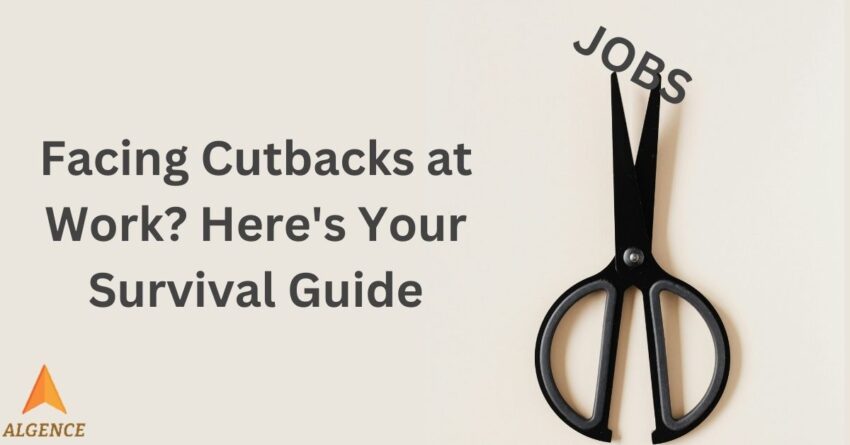Last year, the tech sector saw a lot of companies slash budgets, layoff employees and become much more conservative in their outlook. Although the economy narrowly escaped a recession judging by all the tradition measures, corporate America remains pessimistic on future growth. Here’s what we think you should be doing now, so that you’re prepared no matter what the economy and your company go through.
Realize that you are not immune from unemployment.
One of the biggest mistakes for anyone to make in their career is to believe in self-exceptionalism. Here’s an old saying: a recession is when your neighbor loses his job, a depression is when you lose yours. Bad things happen to good people, and leaders terminate high-performers for terrible reasons. The single biggest piece of advice we have is to adopt the right mindset.
Benchmark your skills to the market, and invest in your own upskilling.
Continuously assessing and adding to your skillset is the only real way to future-proof your career. Smart people are constantly preparing for the next thing, which also just so happens to be the best way to stay on top of industry trends. Algence offers a variety of different upskilling pathways for a lot of different tech roles. If you want to figure out the next thing to dive deep into, Algence is a great place to start.
There are two main approaches you might consider to upskilling. First, you can go deeper into your current domain. Say you are a frontend developer and already an expert on HTTPS, CSS and Graphql. Taking a skills assessment from Algence would suggest that you now learn React Native, Flutter or Ionic to brush up on mobile app development. Second, you can reach across domains and become a full stack developer. Someone already proficient in frontend could for example go learn about backend topics or API subskills such as OAuth or even web security. Learning something brand new, out of your comfort zone, is the best way to stay engaged.
Update your resume today. Like, right now.
You should always have an up-to-date resume. We recommend that you maintain a long-form resume, capturing all aspects of your job over the years. Don’t lie, but don’t be afraid to sell yourself either. You should have a lengthy resume that you can slim down and tailor for the specific jobs you actually want. Never submit the exact same resume to more than one job – this would probably be a waste of time. The best way to prepare for future job applications is to do the care & feeding for your resume right now.
If writing is not your strong suite, you can always hire a resume writer. Aim to spend between $100 to $250 on a high-quality freelancer, anything less might not be worth your time. This individual will conduct a mock interview, going over your background and experiences and writing all your answers down. They will then distill all this information into a polished resume, which you can then turn around and submit as part of your job applications.
Update your LinkedIn profile.
Similar to how you should maintain an up-to-date resume, you should also invest the time into keeping up a LinkedIn presence. This should include subscribing to professional content, commenting on other people’s posts, and liking your colleagues’ career updates. Your profile should be polished with a professional headshot (more on that in a minute) and outline your experiences in brief. In general, we don’t recommend writing overly descriptive summaries of duties and responsibilities – that is what your resume is for. Often times, freelance resume writers will offer a packaged deal where they will update your LinkedIn profile as well.
Get a professional headshot for LinkedIn.
Have you ever seen a LinkedIn profile photo, where the photo is clearly a cropped headshot from the last wedding someone went to?
I hate to break it to you, but first impressions matter. If you plan to use LinkedIn to contact future hiring managers and recruiters, you need to have a decent photo of yourself on the site, preferably one taken by a professional photographer, or at least someone who knows what they are doing. Your goal on LinkedIn is to gain a professional network, and pass the “first impression” test, i.e. to strike up a conversation and advance into a pool of candidates at prospective employers. Aim for your profile photo to have a generic background, and for the photo to be closeup with your face in the center.
Keep your network warm.
Our last piece of advice is to keep your professional network warm. Invest the time and energy now, before you are actively looking for your next gig, and before you absolutely need a job immediately, to keep relationships alive with former colleagues. Is there someone you respect who you haven’t spoken to in over a year? Reach out on LinkedIn and ask to catchup over coffee. If you approach your network on positive terms, seeing how you can help others, then the odds that someone will be willing to help you in the future increase substantially. After all, studies repeatedly show that loose connections translate to job opportunities, not your closest ties.
Want more thoughts on how to break into the tech sector as a software developer? Check out our post here.

